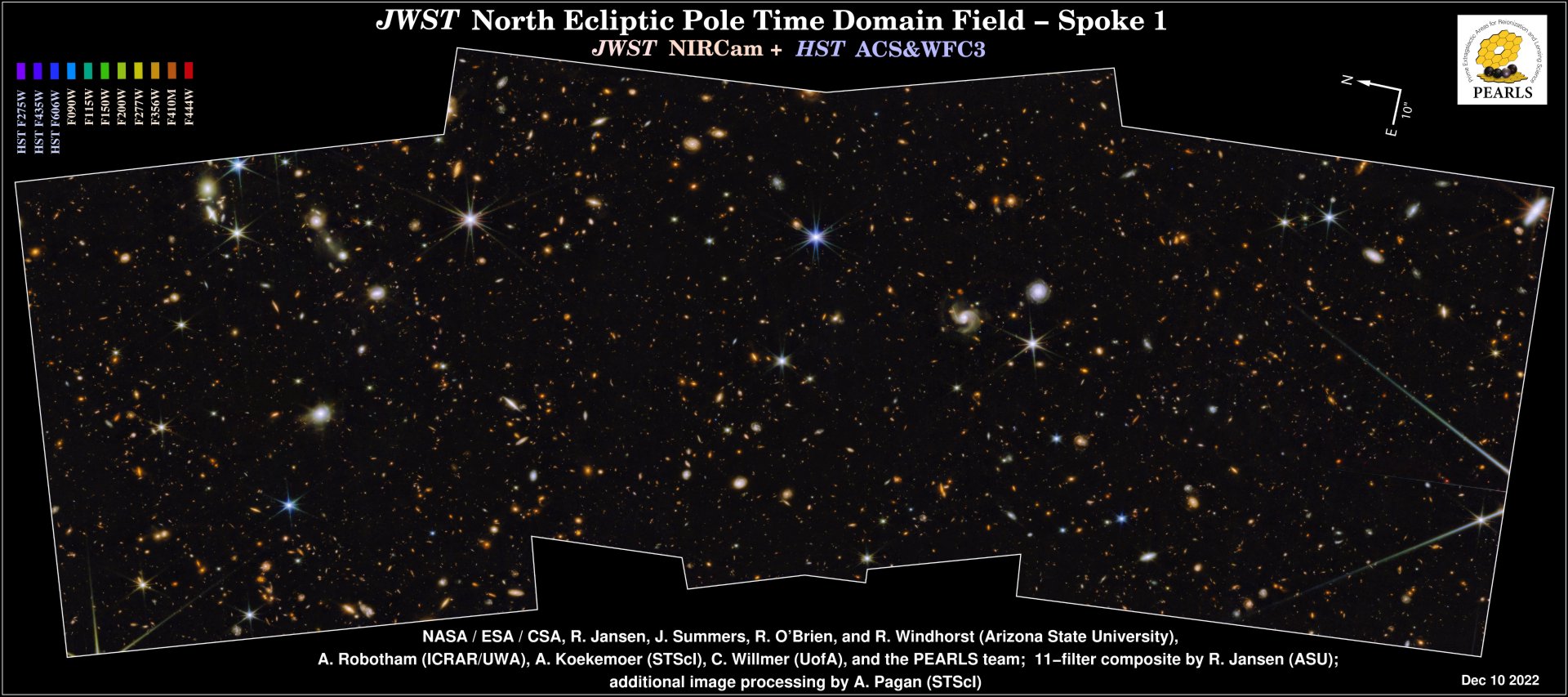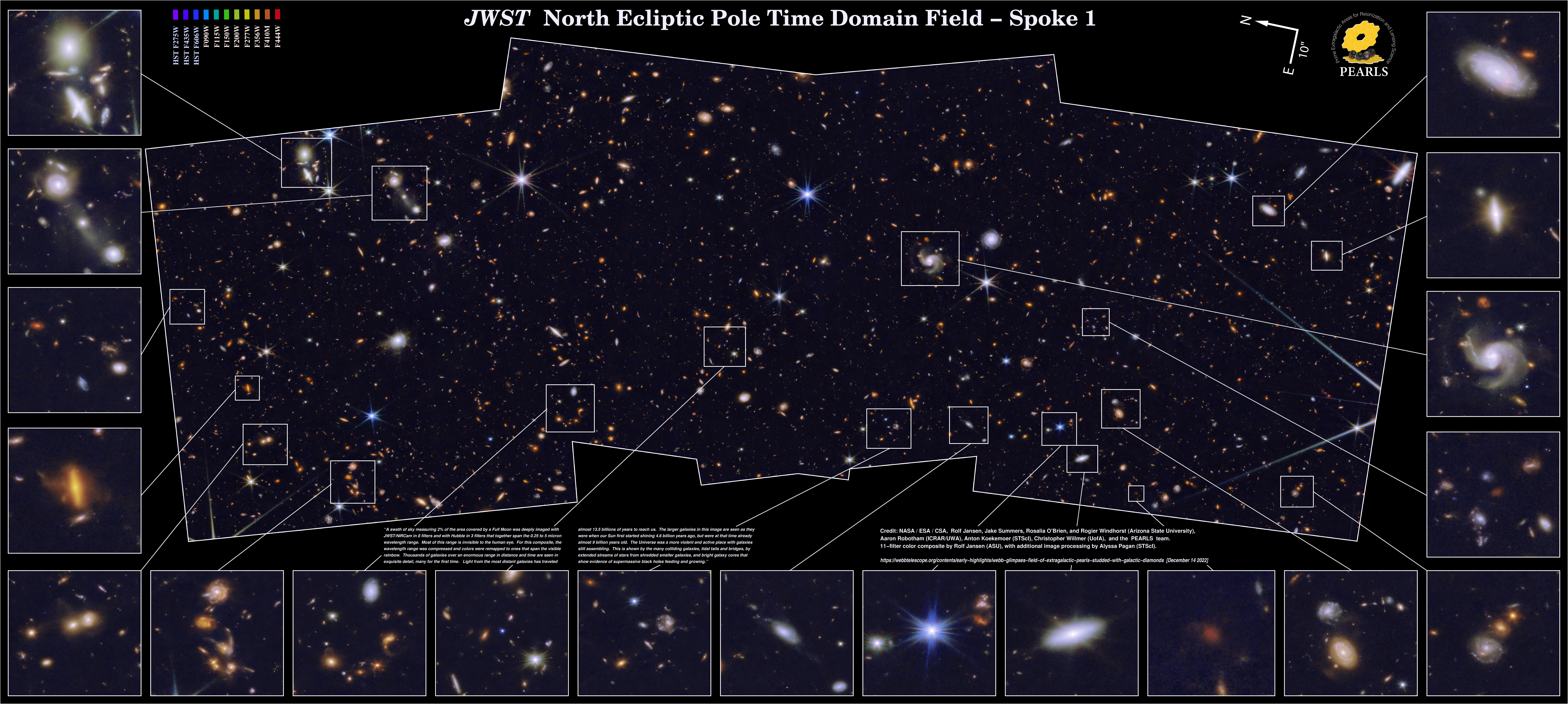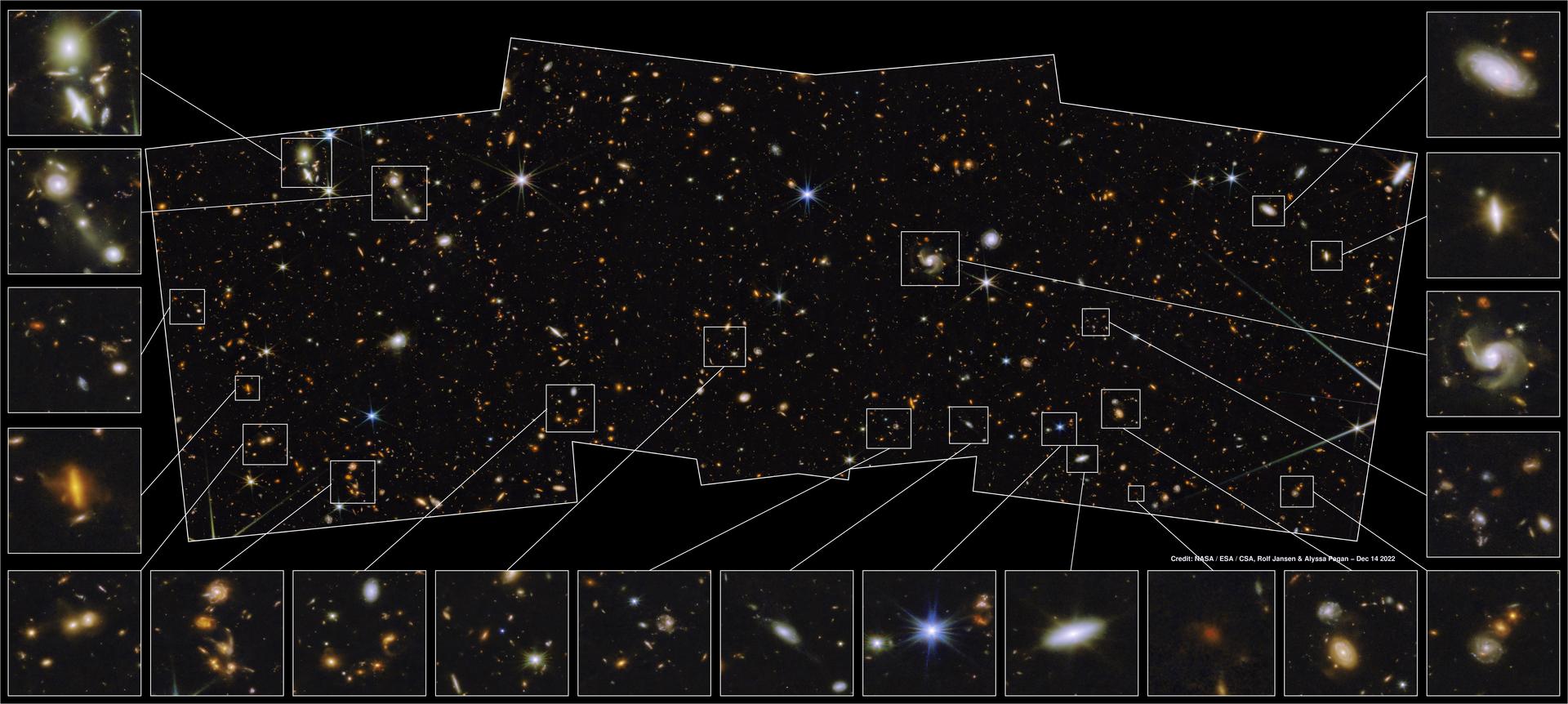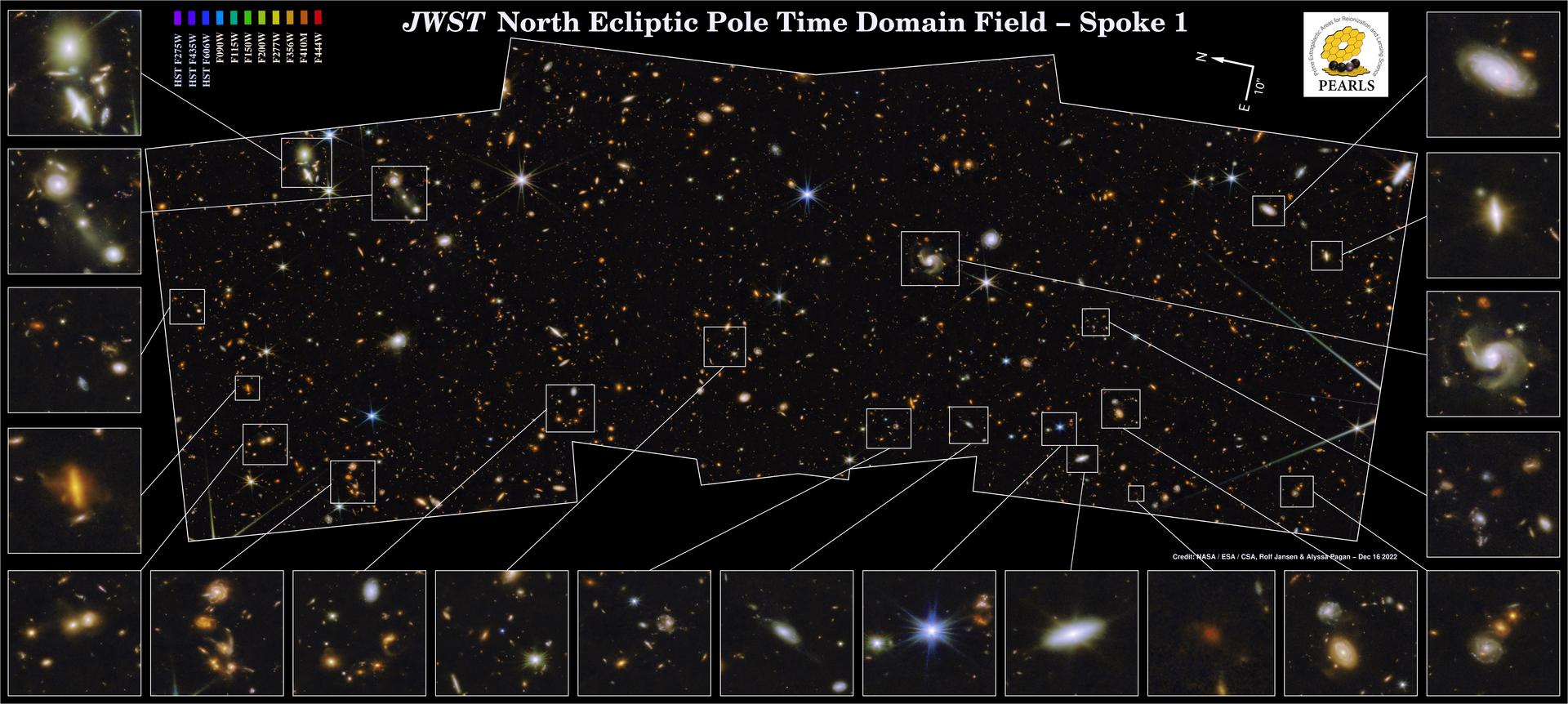
Key members of the PEARLS team that created this image share their first impressions.
``For over two decades, I've worked with a large international team of scientists to prepare our Webb science program'', says Rogier Windhorst, Regents professor at Arizona State University and PEARLS PI. ``JWST's images are truly phenomenal, really beyond my wildest dreams. They allow me to measure the number density of galaxies shining to very faint infrared limits and the total amount of light they produce. This light is much dimmer, though, than the very dark infrared sky measured between those galaxies.''
``I was blown away by the first PEARLS images'', agrees Rolf Jansen, Research Scientist at ASU and a PEARLS Co-I. ``Little did I know, when I selected this field near the North Ecliptic Pole, that it would yield such a treasure trove of distant galaxies, and that we would get direct clues about the processes by which galaxies assemble and grow — I can see streams, tails, shells and halos of stars in their outskirts, the leftovers of their building blocks.''
``The JWST images far exceed what we expected from my simulations in the months prior to the first science observations'', says Jake Summers, a research assistant at ASU. ``Analyzing stars in these JWST images, I was most surprised by the exquisite resolution, and there are many objects that I never thought we would actually be able to see.''
``The diffuse light that I measured in between stars and galaxies has cosmological significance, encoding the history of the Universe'' says Rosalia O'Brien, a graduate research assistant at ASU. ``I feel very lucky to start my career right now — JWST data is like nothing we have ever seen, and I'm really excited about the opportunities and challenges it offers.''
``I spent many years designing the tools to find and accurately measure the brightness of all objects in the new JWST PEARLS images, and separate foreground Galactic stars from distant galaxies'', says Seth Cohen, a research scientist at ASU and a PEARLS Co-I. ``The telescope's performance, especially at the shortest near-infrared wavelengths, has exceeded all my expectations, and allowed for unplanned discoveries.''
``The stunning image quality of JWST is truly out of this world'', agrees Anton Koekemoer, Research Astronomer at STScI who did his magic to assemble the PEARLS images into very large mosaics, ``To catch a glimpse of the very rare galaxies at the dawn of cosmic time, we need deep imaging over a large area, which this PEARLS NEP field provides.''
``I expect that this field will be monitored throughout the JWST mission, to reveal objects that move, vary in brightness, or briefly flare up.'', says Rolf. Adds Anton: ``Such monitoring will enable the discovery of time-variable objects like distant exploding supernovae and bright accretion gas around black holes in active galaxies, which should be detectable to larger distances than ever before.''
``By topping off JWST's fuel tanks before launch (possible because the observatory remained within its design weight) and thanks to an extremely accurate launch and orbit insertion by Ariane V (leaving the full fuel margin allocated), the JWST mission may continue well into the 2030s.'', concludes Rogier. ``This unique field is designed to be observable with JWST 365 days per year, so its time-domain legacy, area covered, and depth reached can only get better with time.''

More blue- and slightly green enhanced: (TIFF [160 MB] | PNG [108 MB] | PDF [29 MB])
About these PEARLS team members:
Rogier Windhorst is a Regents Professor in the School of Earth and Space Exploration (SESE) of the Arizona State University (ASU), serves as one of 6 JWST Interdisciplinary Scientists world-wide, and is the Principal Investigator (PI) of the PEARLS program. PEARLS stands for ``Prime Extragalactic Areas for Reionization and Lensing Science''. The PEARLS team consists of nearly 100 scientists spread over 18 time zones world-wide.
Rolf Jansen is a Research Scientist at ASU/SESE and PEARLS co-investigator (Co-I). He selected the JWST NEP Time Domain Field and led its development as a new community field for time domain science with JWST, including the design of these NIRCam observation. He also is PI of the Hubble images used in this color composite.
Seth Cohen is a Research Scientist at ASU/SESE and a PEARLS Co-I. He led software development and photometric calibration, and generated object catalogs for this field.
Jake Summers is a Research Assistant at ASU/SESE, responsible for processing, organizing, and distributing the PEARLS data to the team, including the generation of initial mosaics and color composites.
Rosalia O'Brien is a Graduate Research Assistant at ASU/SESE, responsible for measuring diffuse light, and for reprocessing the Hubble images.
Anton Koekemoer is a Research Astronomer at STScI, responsible for the astrometric alignment and combination of individual NIRCam detector images into the final PEARLS mosaics.
Aaron Robotham is a Professor at the University of Western Australia's ICRAR, and responsible for the detector-level post-processing of the NIRCam data.
Christopher Willmer is a Research Astronomer at the University of Arizona's Steward Observatory, is a NIRCam team member, helped develop the JWST NEP Time Domain Field, and constructed camera artifacts templates.
Alyssa Pagan is a science visuals developer at STScI, who helped to best present these image composites in their full glory.

